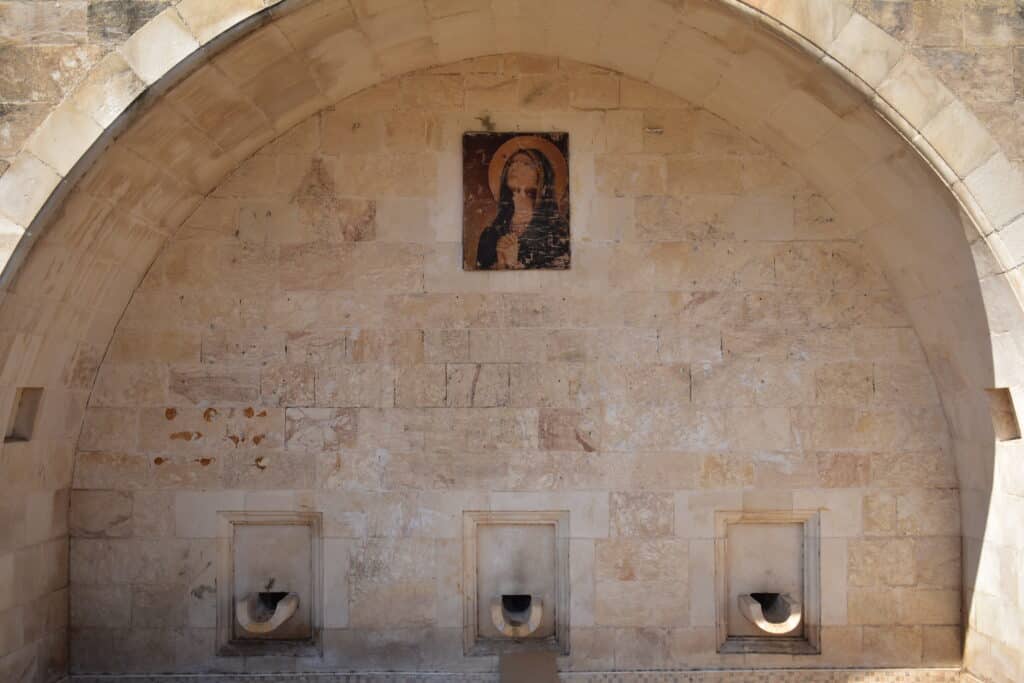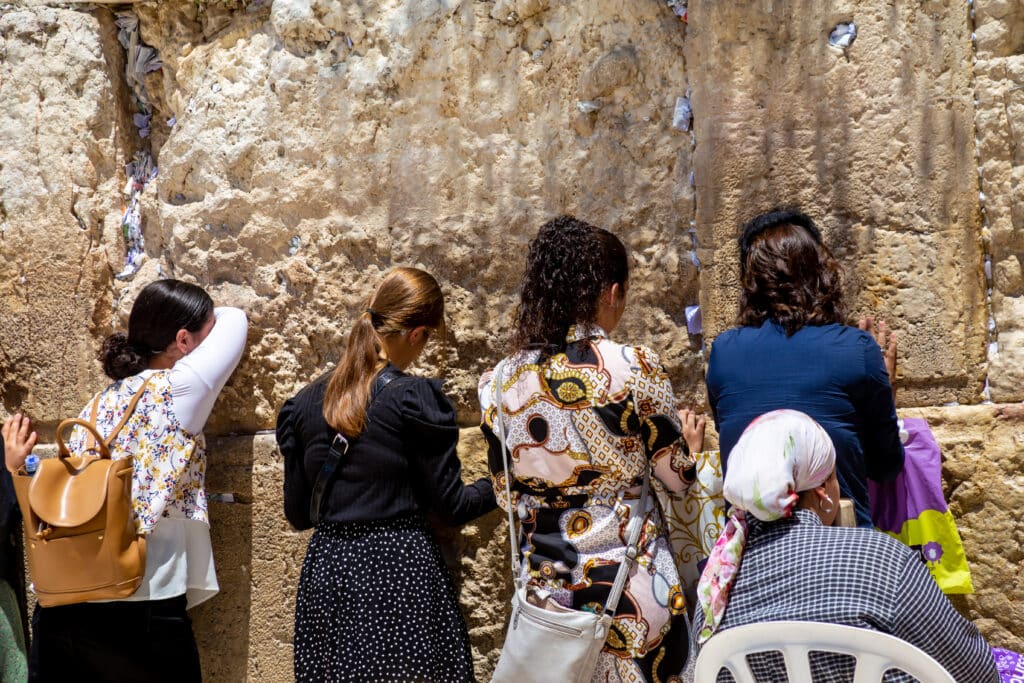Meet Mary (or “Miriam”), Mother of Jesus
For centuries, Christians have revered the woman chosen by God to bear the Savior of the world. Her story is one of courage, faith, and obedience—a life central to God’s redemptive plan. Yet to fully comprehend her role as Jesus’ mother, it helps to look beyond the familiar name of “Mary” and rediscover her true identity, including through her genealogy, as “Miriam.”
Miriam’s Hebrew name roots her in the history and covenantal promises of Israel. It connects her to her people’s struggles and the hope embodied in the prophecies about the coming of the Messiah.
What can her story and heritage reveal about Mary’s role as the mother of Jesus? And how does it transform the way we see, and apply, God’s promises today?
Miriam or Mary? (or Maria?)
While some question whether Mary and Miriam are the same name, there are important linguistic and historical factors we need to consider.
The New Testament was written in Greek, and many of the names were translated or transliterated from Hebrew or Aramaic into Greek. The Hebrew name “Miriam” became Miryam or Maryam in Aramaic.
Jesus and his contemporaries would have spoken Aramaic, a language closely related to Hebrew. The Gospels use the form Maria, which then became Mary in English. Since Greek female names often end in -a/-ah, and that is likely how Maryam became Marya.
It is worth noting that the name “Miriam” was prominent in the land of the Bible, and it is not surprising that several women were named Mary/Maryam/Miriam in Jesus’ circles. It confirms the popularity of the name among Jewish women of the time.
Interestingly, while the Western churches use the name Mary or Maria for the mother of Jesus, the Eastern Orthodox Church still often refers to her as “Miriam” in their liturgy.
The Meaning of Miriam: A Name of Struggle and Hope
To understand the depth of Mary’s identity, we must start with her name. Her Hebrew name was Miriam (מִרְיָם), the same name as that of Moses’ sister, a woman who played a pivotal role in Israel’s deliverance during the Exodus.
Thus, this name carries layers of meaning tied to the story of Israel and God’s redeeming plan. Scholars often debate its precise etymology, but there are two primary interpretations:
- “Bitterness” or “Rebellion”: Derived from the Hebrew root מרר (marar), meaning “to be bitter,” the name reflects the sufferings and struggles of the Jewish people.
- “Beloved” or “Exalted”: Another understanding ties the name to the Egyptian root mry or mr, meaning “beloved” or “love.” This suggests God’s favor and His redemptive promises.
This duality—bitterness and belovedness—captures the essence of both Miriams. They carried the weight of struggle while pointing toward redemption, making the name a perfect reflection of their roles in God’s story.
Miriam and Mary: Parallels in Deliverance
The name Miriam connects Mary, the mother of Jesus, to her namesake—the sister of Moses. But that is not where the similarities end. Both Miriams lived during times of oppression, with Exodus’ Miriam witnessing Israel’s bondage in Egypt and the Gospels’ Mary living under Roman rule.
Moses—who would lead Israel to freedom—had his life preserved by Miriam against Pharaoh’s decree to kill all Israelite male babies (Exodus 2:4–8).
Centuries later, Mary ensured the safety of her son, Jesus—the ultimate Deliverer—by fleeing with Him to Egypt to escape King Herod’s decree to kill all male children in Bethlehem under two years of age (Matthew 2:13–15). This act fulfilled the prophecy in Hosea 11:1: “Out of Egypt I called My son.”
Both women responded to God’s deliverance with songs of praise. The first Miriam led the women of Israel in celebrating God’s triumph over Pharaoh at the Red Sea (Exodus 15:20–21), while Mary’s Magnificat (Luke 1:46–55) celebrated God’s mercy and His faithfulness to Israel through the coming of the Messiah.
Miriam’s Faithfulness to God’s Commandments
In the Gospels we can observe that Mary’s life was deeply rooted in Torah, the covenantal traditions of her people, and obedience to God’s Law. Her faithfulness is evident in her actions following the birth of Jesus.
She ensured that Jesus was circumcised on the eighth day, as required by the covenant with Abraham. This not only publicly proclaimed that her Son was part of the chosen people; it also marked Him with the sign of the covenant, tying His life to God’s promises to Abraham.
The Purification and Presentation at the Temple
Following Jesus’ nativity, Mary followed the Mosaic rulings concerning post-partum purification. A Jewish woman birthing a son was regarded as ritually unclean for 40 days, after which she was required to present a purification offering at the Temple (Luke 2:21).
Mary fulfilled this requirement by bringing a humble offering of “a pair of doves or two young pigeons” (Luke 2:22–24). This provision for those unable to afford a lamb, underscores both Mary and Joseph’s modest economic status and their dedication to observing the Law.
Additionally, Jesus was presented at the Temple in accordance with Exodus 13:2, which required the consecration of the firstborn to God. This act highlighted Joseph and Mary, mother of Jesus’, awareness of their Son’s divine purpose, while honoring the traditions passed down since the time of Moses.
Observance of the Sabbath and Festivals
As a devout Jew, Mary would have faithfully observed the Shabbat, which was central to Jewish life. Keeping the Sabbath holy was a sign of obedience to God’s covenant with Israel. It included resting from work and participating in synagogue practices that Mary would have passed on to Yeshua.
Mary and Joseph also made the pilgrimages to Jerusalem for major festivals as commanded by God. Luke 2:41 notes that they made the journey annually for Passover, a tradition rooted in Exodus 12:24–27. By including Jesus, Mary not only fulfilled the Law, but also immersed her Son in the story of Israel’s deliverance, preparing Him for His mission as the ultimate Passover Lamb.
The Magnificat: A Song Rooted in Jewish Scripture
When Mary received the news that she would bear the Messiah, her response was profound worship. Her song, recorded in Luke 1:46–55, shows powerfully how her expression of faith and understanding of God’s promises were deeply rooted in Hebrew Scripture.
The Magnificat echoes the themes and language of the Psalms, of Hannah’s prayer in the book of Samuel, and other key passages from the Torah and Prophets. Through her words, Mary proclaims the fulfillment of God’s covenant with Israel, and His mercy toward the humble.
Hannah’s Prayer: A Clear Inspiration
Perhaps the most striking parallel in Mary’s Magnificat is with Hannah’s prayer in 1 Samuel 2:1–10. It was a song of praise offered after Hannah’s miraculous experience of giving birth to Samuel.
Both Hannah and Mary Jesus’ mother, humble women chosen by God for extraordinary purposes, played key roles in His redemptive plan through the miraculous births of their sons.
Just as Hannah conceived Samuel after years of barrenness through God’s intervention, Mary’s conception of Jesus was a divine miracle, brought about by the Holy Spirit (Luke 1:35). Both children were set apart for God’s purposes. Samuel as a prophet and a priest who would guide Israel through a critical period of its history. And Jesus as the long-awaited Messiah, whose life and ministry would bring salvation to the world.
These miraculous births were not merely personal blessings but acts of divine intervention that carried immense significance for Israel and the world. Samuel’s birth marked the beginning of Israel’s monarchy, a chapter born from the people’s request for a king—a request reflecting their struggle to fully trust in God as their ultimate ruler. Yet, in His sovereignty, God used this human desire to accomplish His redemptive purposes, culminating in Jesus, the eternal King born of Mary.
Mary’s Magnificat, echoing Hannah’s prayer, proclaims the fulfillment of these promises: the monarchy’s true purpose realized in Jesus, the long-awaited Messiah.
Echoing Themes
Both women responded to these extraordinary events with songs of praise, expressing their faith and joy in the Lord. The similarities between Hannah’s prayer and Mary’s Magnificat reveal how their lives aligned with God’s purposes, and their words echo themes central to God’s covenantal promises:
- Rejoicing in Salvation:
Hannah: “My heart rejoices in the LORD; in the LORD my horn is lifted high” (1 Samuel 2:1).
Mary: “My soul glorifies the LORD and my spirit rejoices in God my Savior” (Luke 1:46–47). - Exalting the Lowly:
Hannah: “He raises the poor from the dust and lifts the needy from the ash heap” (1 Samuel 2:8).
Mary: “He has brought down rulers from their thrones but has lifted up the humble” (Luke 1:52). - Acknowledging God’s Power:
Hannah: “The bows of the warriors are broken, but those who stumbled are armed with strength” (1 Samuel 2:4).
Mary: “He has performed mighty deeds with His arm; He has scattered those who are proud in their inmost thoughts” (Luke 1:51).
By echoing Hannah’s prayer, Mary Jesus’ mother aligns herself with a legacy of faithful women through whom God worked to bring about His purposes. Her Magnificat proclaims not only her personal gratitude but also God’s enduring faithfulness to His promises, linking her role to the broader narrative of redemption.
Covenantal Promises: Abraham and the Prophets
Mary’s song explicitly ties her experience to God’s promises to Abraham and His descendants: “He has helped His servant Israel, remembering to be merciful to Abraham and his descendants forever, just as He promised our ancestors” (Luke 1:54–55).
This reference connects the Magnificat to the Abrahamic covenant in Genesis 12:1–3. In the covenant, God promises to make Abraham’s descendants a great nation and to bless all nations through them.
By recalling this promise, Mary acknowledges that the birth of the Messiah is the fulfillment of centuries of hope and expectation for Israel.
Mary’s Knowledge of Scripture and Her Role in God’s Plan
Mary’s Magnificat further reveals a woman deeply immersed in the Scriptures and covenantal promises of her people. Her song is not just a spontaneous expression of joy but a theologically rich declaration of God’s faithfulness to the nation of Israel and His transformative power.
Through the Magnificat, Mary ties her story to the ongoing narrative of God’s work, from His covenant with Abraham to the prophetic visions of justice and mercy. She recognizes her role as both a humble servant of the Lord and a participant in His redemptive plan for the world.
Mary, Mother of Jesus: Reflecting the Meditative Heart of Jewish Faith
Beyond her public declarations of faith, Mary is also portrayed as a meditative figure who “treasured up all these things and pondered them in her heart” (Luke 2:19, 2:51). This inward reflection reveals a depth of faith and understanding, as she sought to grasp the full weight of God’s promises unfolding through her life and the life of her Son.
Her quiet contemplation echoes the reflective heart of Jewish faith, as seen in the Psalms of her ancestor David, who often reflected on God’s faithfulness and mighty works. For example, David’s words in Psalm 143:5—“I meditate on all Your works; I consider what Your hands have done”—mirror Mary’s response to the unfolding story of redemption in her own life.
Like David, Mary embodies a faith that not only proclaims God’s greatness but also takes the time to ponder and internalize His promises. This reflective posture, deeply rooted in the Jewish tradition of meditation on God’s Word, serves as a model for believers to embrace both the active and contemplative dimensions of faith.
The Lineage of Mary, Mother of Jesus: A Royal Heritage
As mentioned, Mary’s Jewish heritage also includes her descent from King David, a connection that is critical to the fulfillment of messianic prophecy. The promise God made to David in 2 Samuel 7:12–16 declared that the Messiah would come from David’s royal lineage:
“I will establish the throne of his kingdom forever.”
While genealogies in the Gospels of Matthew (1:1–16) and Luke (3:23–38) differ in bloodline routes, both confirm that Jesus’ lineage traces back to David. Mary, as a descendant of David, carried this royal heritage. Her marriage to Joseph, also of David’s line, further solidified Jesus’ connection to the throne of Israel. Together, Mary and Joseph’s roles placed Jesus squarely within the fulfillment of national Israel’s messianic hopes.
This Davidic lineage not only establishes Jesus’ rightful claim to kingship, but also ties Mary’s life to God’s promises made centuries earlier.
Mary: A Living Bridge Between Covenants
As we see, Mary’s life uniquely intertwines with the three major covenants of the Old Testament—Abrahamic, Mosaic, and Davidic—serving as a bridge to the New Covenant through Jesus.
In the Abrahamic covenant, God promised to bless all nations through Abraham’s descendants (Genesis 12:3). By bearing Jesus, the Messiah who brings salvation to the world, Mary embodies the fulfillment of this promise.
Through her lineage, Mary also fulfills the Davidic covenant, which declared that a descendant of David would reign on an eternal throne (2 Samuel 7:12–16). As a descendant of David, Mary provides the human connection for Jesus to claim His rightful place as the eternal King.
Additionally, Mary faithfully observed the Mosaic covenant, adhering to the Law and raising Jesus within its traditions, such as His circumcision and consecration at the Temple. Yet through her Son, she witnessed the transformation of the Mosaic covenant into the New Covenant, where Jesus fulfilled the Law and extended God’s promises to all people (Jeremiah 31:31–34).
In this way, Mary becomes a vital figure who not only participates in these ancient covenants but also bridges them into their ultimate fulfillment through the New Covenant in Christ.
The Fulfillment of Miriam’s Name: Bitterness and Belovedness
While Mary was instrumental in God’s plan and played a crucial role in His work of salvation, it came at a great cost. Simeon’s prophecy in the Temple revealed the weight of her calling: “And a sword will pierce your own soul too” (Luke 2:35). This foretelling found its fulfillment at the cross, where Mary stood, watching her son suffer and die.
In that moment, the “bitterness” of her name as Miriam was fully realized. Her grief echoed the centuries of sorrow endured by her people, yet her faith never wavered.
At the same time, Mary’s life also reflected the “belovedness” of her name. Chosen by God to bring the Messiah into the world, she was a recipient of divine favor and a key figure in the ultimate act of redemption. Her role in God’s plan demonstrates that His promises are both beautiful and costly.
As the mother of Jesus, Mary embodied, perhaps most closely, her Son’s own words—that following God is not an easy road. It is not exempt from suffering; in fact, we are to expect it. Yet through that anguish, God’s redemptive purposes unfold, bringing hope and salvation to the world.
Mary’s life, and her Hebrew name, Miriam, reminds us that to follow God is to embrace both the struggle and the joy, trusting that His faithfulness and His plan will prevail.

Yeshua: The Hebrew Name of Jesus (ישוע) – Free PDF Download
What was the name that the disciples called Jesus? Yeshua! What did it mean to them, and what does it mean to us today?
Whether you’re just finding out about Hebrew words and how they can impact your faith, or you have been referring to Jesus by His Hebrew name for decades, we’ve created the perfect guide for you.
Articles Related to Mary or Miriam: Was the Mother of Jesus Jewish?
Estimated reading time: 12 minutes



